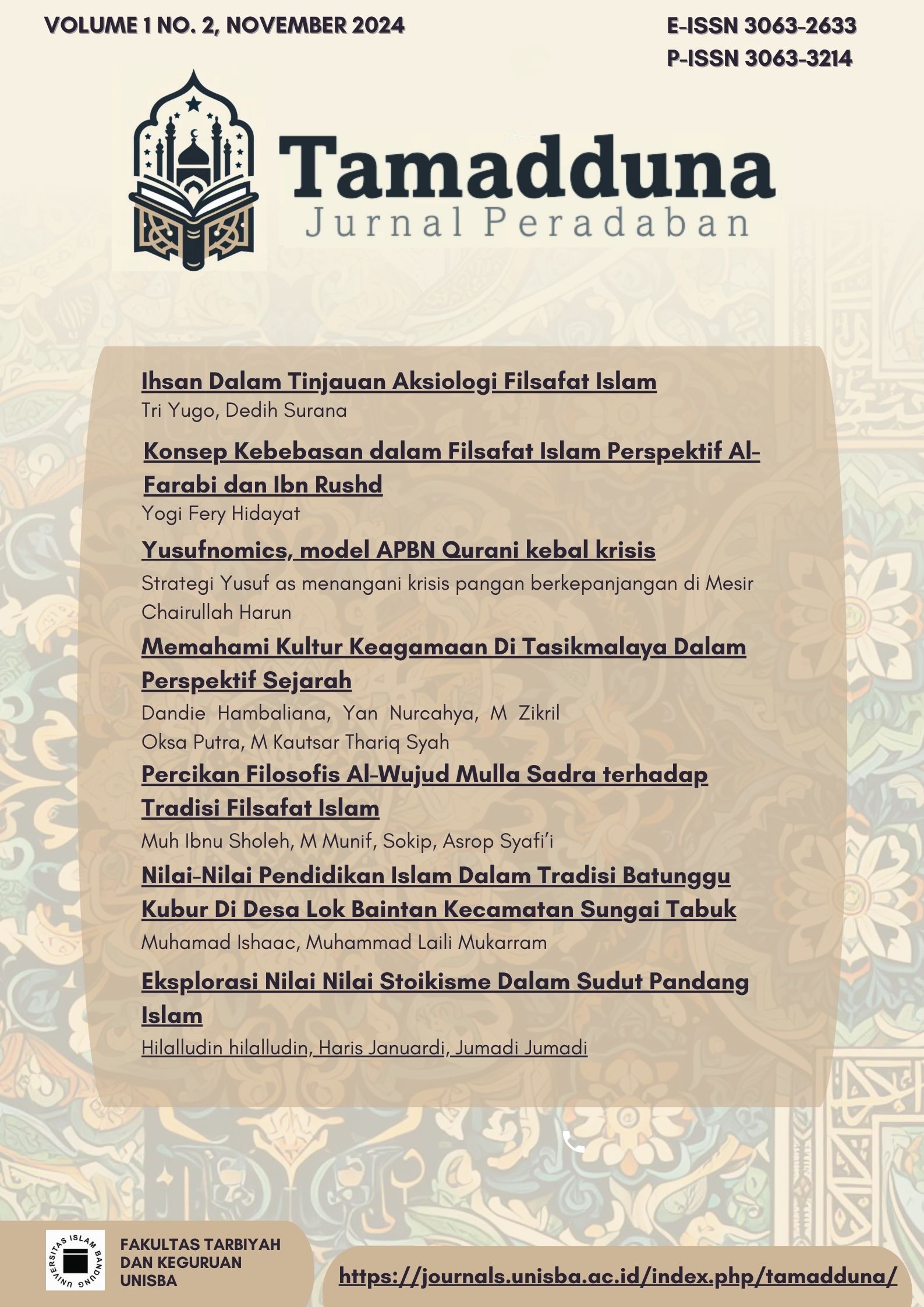Understanding Religious Culture in Tasikmalaya from a Historical Perspective
DOI:
https://doi.org/10.29313/tamadduna.v1i2.5057Keywords:
Religion, Darul Islam, Social , TasikmalayaAbstract
Tasikmalaya has a very extraordinary culture of diversity where almost all of the people are Muslim, this is evidenced by the large number of pesantren in Tasikmaaya, which in the course of its history has contributed enough to the social life of the community and the nation, as we see in the history of the pesantren founded by KH. Zaenal Mustofa who was so hard against the Dutch and Japanese colonization, in this paper will present information about the socio-cultural history of religion in Tasikmalaya. This paper discusses the role of Islamic organizations such as Masyumi and Darul Islam (DI) in the political and social context of Tasikmalaya in the 1950s. The type of research used is qualitative with a library research method through the stages of observation, library documentation, and interviews. It also explains the contradictions between economic development and security conditions in the region. Through this analysis, the complexity of Tasikmalaya's religious culture and its impact on society and the state can be understood.
References
Daftar Pustaka
Kamba, M. N. (2018). Kids Zaman Now Menemukan Kembali Islam. Tangerang Selatan: Pustaka Iman.
Awwas, Irfan S (2008). Jejak Jihad SM. Kartosoewirjo (Cet. 5) Yogyakarta: Darul Uswah.
Awwas, Irfan S. (2008). Trilogi KepemimpinanNegara Islam Indonesia. Yogyakarta: Darul Uswah.
Awwas, Irfan S. (2015). Kesaksian Pelaku Sejarah Darul Islam (DI/TII). Yogyakarta: Darul Uswah.
El-Sulthani, Mawardi. (2002). Umat Islam Siap Perang. Jakarta : Al-Mawardi Prima.
Falah, Miftahul. (2011). sebagai bagian dari buku Sumedang dari Masa ke Masa. diakses dari:https://pustaka.unpad.ac.id/wpcontent/uploads/2011/02/pergerakan_ke bangsaan_dan_gejolak_politik_lokal.pdf diakses pada 15 Maret 2024, pukul 00.14 WIB
Pemerintah Provinsi Jawa Barat. Profil Daerah Kota Tasikmalaya, www.jabarprov.go.id diakses pada 15 Juni 2024 pukul 13.35 WIB
Muzakir, Amin. (2017). Konservatisme Islam dan Intoleransi Keagamaan di Tasikmalaya Jurnal Multikultural & Multireligius Vol. 16
Uraian mengenai Nyi Aciah, diambil dari Ekadjati et al., 1990: 136-138; Kartodirdjo, 1982:214-215; Lubis et al., 2003: 401-403
Mudzakkir, Amin. (2017). Konservatisme Islam dan Intoleransi Keagamaan di Tasikmalaya, Jakarta: P2SDR-LIPI, Hal.60
Herlina Lubis, Nina. (2014). Sejarah Perkembangan Islam di Jawa Barat. Bandung: Diva Press.
Dengel, Holk. (1995). Darul Islam dan Kartosuwirjo "angan-angan yang gagal". Jakarta: Rineka Cipta.











